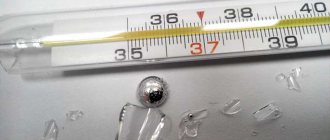- Swelling of the mucous membrane, indicating the presence of inflammation in the tissues;
- The production of abundant mucus (snot), with the help of which pathogenic infectious agents (microorganisms) and their decay products are removed from the passages.
Congestion is caused by both factors.
Due to edema, a mechanical narrowing of the lumen of the passages occurs. Due to abundant mucus - their blockage. In some cases, nasal congestion without runny nose (discharge) is noted in the first days of the development of acute respiratory infections. Mucus has not yet begun to form during this period, but after 2-3 days the clinical picture becomes classic - with snot, headache, congestion, and fever. Nasal congestion without runny nose (discharge) for a long time indicates the presence of another disease that requires timely diagnosis and targeted therapy.
Many causes of nasal congestion without runny nose (discharge) have been identified. The most common of them:
- Deviation of the nasal septum that occurs for any reason (post-traumatic, congenital, as a result of a previous illness). Difficulty breathing may be permanent or occur periodically;
- Excessively dry air, leading to drying of the mucous membrane. A patient with allergic, infectious rhinitis develops typical swelling of the mucous membrane, but the mucus itself (snot) instantly dries up, erasing the classic clinical picture. A similar phenomenon is often observed with the development of sinusitis, including sinusitis and frontal sinusitis;
- Trauma and foreign body in the lumen of the passage. Edema develops as a reactive response to irritation when the mucous membrane comes into contact with a foreign body or to a septal fracture;
- Drug-induced rhinitis is a response to the abuse of vasoconstrictor drugs (drops, ointments);
- Changes in hormonal status, observed more often in pregnant women and nursing mothers. If a pregnant woman comes to our clinic with such complaints, we can confidently say that this is a symptom of steroid metabolism disorders. In rare cases, dryness of the mucous membrane is associated with the progression of endocrine diseases, for example, diabetes, leading not only to hormonal imbalance, but also to metabolic disorders;
- The development of localized rhinitis in the posterior parts of the nasopharynx, in which the resulting discharge is swallowed and is not released;
- Polyposis is the proliferation of benign neoplasms that mechanically narrow the lumen of the nasal passages;
- Adenoids and other pathological processes in the pharynx.
Whatever the reasons for nasal congestion without runny nose (discharge), the patient is advised to immediately undergo an examination by an ENT doctor to establish a reliable diagnosis and prescribe targeted therapy.
Reasons for appearance
Difficult nasal breathing without nasal mucus, but with swelling of the mucous membrane is a consequence of the development not only of a runny nose, but also of various otorhinolaryngological diseases. To eliminate this symptom, you first need to understand the root cause of the dysfunction of the nose. It is not possible to take a deep breath due to:
- Inflammation. This category includes the development of sinusitis, sinusitis, and even the common cold or flu.
- Allergic reaction. Congestion appears when the mucous membrane is irritated by various irritants.
- Changes in the internal structure of the nose. When polyps or cysts form in the nasal cavity, enlarged adenoids, or a deviated nasal septum, breathing becomes difficult.
Provoking factors for chronic nasal congestion:
- Incorrect treatment of colds, as a result of which the mucous membrane of the nasal cavity swells due to the uncontrolled use of vasoconstrictor drops.
- Dry air. In winter, the heating in the room makes it difficult to breathe. The mucous membrane dries out, the epithelium is not moisturized. The body tries to produce mucus on its own to moisturize the tissues, so it feels congested.
Why is constant nasal congestion dangerous?
Nasal congestion without mucous discharge indicates the presence of a hidden inflammatory process. The nose cannot stop breathing for no apparent reason.
If timely diagnosis and treatment are not carried out, the following dangerous consequences may occur:
- progression of the inflammatory process in the middle ear
- the formation of polyps in the nose and sinuses
- constant snoring during sleep
- inflammation of the paranasal sinuses in the form of frontal sinusitis or sinusitis
- headaches that get worse with pressure
- problems with the sense of smell and its complete loss
- lack of oxygen leads to decreased performance
If chronic nasal congestion appears in childhood, it can lead to decreased sense of smell, hearing, or mental retardation.
Diagnostics
To determine the cause of congestion at home, the following method is suitable - if after lying on each side alternately for 10-15 minutes, breathing in the upper nasal passage does not improve, then this indicates a nasal injury, a deviated septum, or the presence of a foreign object in the cavity.
If an attack of nasal congestion without a runny nose occurs at a certain moment, then most likely the cause is an allergic reaction. Difficulty breathing without a runny nose with signs of sore throat indicates the development of pharyngitis or laryngitis.
At the appointment, the ENT doctor will conduct an endoscopic examination of the nasal cavity and carefully collect anamnesis. A fluoroscopy of the nose in two planes and an extensive blood test are prescribed. Additionally, allergy tests and CT scans of the paranasal sinuses are prescribed if indicated.
Why is it necessary to contact our clinic?
See also Treatment of ENT diseases Snot in a child Runny nose in an infant Chronic runny nose
If nasal congestion is not treated for a long time, this will lead to atrophy of the mucous membrane, loss of smell, a complete lack of mucus production and other unpleasant consequences. Allergic rhinitis causes the development of bronchial asthma, polyps - oncology, infection - sinusitis, sinusitis, even meningitis, otitis media and hearing loss are often observed.
Only a doctor will be able to carry out targeted treatment, completely restore nasal breathing and eliminate the prospect of complications. You can't hesitate. The sooner you consult a doctor, the more likely it is that treatment will proceed quickly and without complications.
Treatment
Often, patients believe that nasal congestion without a runny nose will go away on its own and do not consult a doctor. Meanwhile, difficulty breathing gets worse.
Drug therapy
First of all, the doctor prescribes drops to moisturize the mucous membrane and produce natural lubrication, as well as local ointments and creams to ease breathing. The ENT doctor then prescribes topical corticosteroids to relieve mucosal swelling and congestion.
In addition to local hydration, it is necessary to drink more fluid to allow water to flow through the blood vessels, instill saline solution, or rinse the nose with a solution of salt or sea water. You need to normalize the moisture level in the room and ventilate the room more often. Thus, local mucosal immunity will recover faster.
Hormonal and antibacterial local drugs are used only after identifying the cause of difficulty breathing. Corticosteroid-based products are contraindicated in children and are prescribed only to adult patients with chronic congestion.
If the cause of congestion is an allergy, then second-generation antihistamines are prescribed. Depending on the degree of difficulty breathing, tablet form or nasal drops are used.
Breathing exercises
Sometimes nasal congestion without a runny nose appears due to addiction to vasoconstrictors. In this case, it is recommended to completely abandon this group of drugs and practice breathing. You should clear your nasal passages, then try to take a full breath and exhale slowly through both nostrils. The exercise is done several times a day, every day. Over time, breathing will resume.
Surgical intervention
Often, during an appointment with an ENT doctor, it turns out that the cause of constant nasal congestion is a deviated septum. In this case, therapeutic treatment is powerless, because the curvature provokes inflammation, irritation and swelling of the mucous membrane. The only true treatment option is septoplasty.
Nasal congestion should not be left untreated, otherwise it can lead to otitis media, sinusitis, laryngitis, pharyngitis and other otorhinolaryngological diseases. An impaired respiratory process causes atrophy of the nasal mucosa.
At the ENT CLINIC in Chertanovo, doctors will always help patients. After a thorough examination and tests, they will determine the cause of difficulty breathing without a runny nose and help the patient regain healthy, full nasal breathing.
Functions of the nose
At rest, one adult takes approximately 16 inhalations and exhalations per minute through the nose. The breathing rate may increase during intense physical exertion and decrease during night sleep. In one breath, an average of 500 ml of air is inhaled, that is, 12,000 l / day. This air must be purified, heated and humidified. Breathing in untreated or cold air can lead to allergies or colds.
Main functions of the nose:
- Breath. Inhaled air enters primarily through the middle nasal passage, passing through the anterior sections of the nasal concha. Exhaled air flows through the lower nasal passage along the base of the nose.
- Protection. The film on the surface of the mucous membrane can absorb smaller impurities and particles and direct them, along with certain secretions, to the nasopharynx. Also, special proteins are formed on the nasal mucosa that support the protective function and are called “humoral defense”
- Conditioning. The nasal mucosa has a large surface and is equipped with an extensive vascular network and a large number of mucus-forming glands. Thanks to this, the nose warms and humidifies the inhaled air.
—
Prevention: to breathe easily
Most often, a clogged nose is the result of a frivolous attitude towards one’s own health. But many problems and complications can be avoided if you follow simple recommendations:
promptly treat any diseases of the ENT organs;- avoid hypothermia - dress appropriately for the weather;
- take vitamins and eat right;
- lead an active lifestyle;
- avoid stress.
Which doctor should I contact?
An ENT specialist or an otorhinolaryngologist will help you cope with the problem; you can make an appointment with him on the website. The doctor will conduct an examination, prescribe examinations, and tests. Based on the results obtained, treatment will be prescribed. All activities take place under the strict supervision of a doctor. You can make an appointment with a specialist by phone (for English-speaking patients), (the lines are open 24 hours a day) or using the form on the website.
JSC "Medicine" (clinic of academician Roitberg) is located in the center of Moscow, 2nd Tverskoy-Yamskaya lane 10 (metro stations "Mayakovskaya", "Tverskaya", "Belorusskaya", "Novoslobodskaya").
What is the nasal cycle? How does nasal breathing occur?
The nasal cycle is a reflex process of nasal breathing, lasting from 2 to 6 hours, regulated by the autonomic nervous system, each half of the nose participates in this process alternately. The nasal cavity is divided into two halves by the nasal septum; the nasal turbinates are located on the lateral walls; there are three of them: superior, middle and inferior. The nasal cycle involves the inferior turbinates, which have a dense vascular network under the mucous membrane. Blood vessels, due to the influence of the nervous system on them, expand, as a result of which the vessels are filled with blood and the size of the shell itself increases, as if it swells. This happens alternately on each side. If there are no physiological or anatomical changes, then the nasal cycle occurs almost imperceptibly. If you just press the wing of your nose against the septum with your finger and turn off first one and then the other half of your nose from breathing, you can really notice that one side breathes better than the other, after a few hours they will change places, and this happens all the time. And this is called the normal nasal cycle.
2. Diagnosis of difficult nasal breathing
To take measures to restore nasal breathing, a thorough diagnosis
, which always includes a conversation with the patient. It is necessary to try to find out how long the respiratory pathology lasts, assess the severity and severity of the disorder, identify events preceding difficult nasal breathing, and hereditary factors.
Also, to prescribe adequate treatment, the doctor can use:
- palpation,
- inspection,
- radiography,
- computed tomography,
- pneumatic rhinomanometry.
Visit our Therapy page
4.Complications of difficult nasal breathing and treatment
Whatever the cause of nasal congestion, this condition complicates gas exchange in the lungs and affects the entire body
. Tachycardia, heart failure, venous congestion in the brain, and changes in cerebrospinal fluid pressure may be observed. In addition, unheated and unpurified air entering through the mouth itself carries the risk of infectious diseases. Chronic mouth breathing changes the shape of the maxillofacial bones, affects the voice, dries out the mucous membranes of the mouth, and causes night snoring up to apnea.
Treatment
difficult nasal breathing is always aimed at eliminating the causes of this condition. This may include antiviral and antibacterial therapy, antiallergic and vasoconstrictor drugs, surgical treatment and rhinoplasty.
What can “ENT Clinic No. 1 Plus” offer you?
- Endoscopic examination of ENT organs.
- A wide range of physiotherapeutic treatment methods to restore vascular tone, reduce the degree of hypertrophy of the mucous membrane of the nasal turbinates, and, as a result, improve nasal breathing (USOL therapy, laser therapy with red, infrared or violet light, magnetic therapy, halotherapy).
- Minimally invasive surgery - using the radio wave method using the Fotek device (disintegration of the inferior nasal concha, removal of synechiae).
- Consultation with leading ENT surgeons in Moscow to resolve the issue of surgical treatment (septoplasty, submucosal vasotomy of the inferior turbinates, conchotomy, polypotomy, removal of tumors of the nasal cavity).
Contact our specialists today, and they will definitely help you! We work for you around the clock!
What happens in a dream?
In a horizontal position, blood flow to the upper body, including the head, increases. Accordingly, during sleep during the nasal cycle, the turbinates fill with blood (and swell) to a greater extent, and breathing may be more difficult through the half in which the turbinate is enlarged at this moment. And it goes away naturally in the morning, after getting out of bed for a few minutes. With a normal nasal cycle, nasal breathing does not occur.
Surgery
In the context of chronic congestion and congestion without runny nose, surgical care takes precedence over medication. The remedies listed above obviously will not be able to eliminate polyps, adenoids or deviated septum. Main indications for surgical intervention:
- Adenoids.
- Polyps in the nasal cavity.
- Tumor formations of the nasopharynx.
- Choanal atresia and other defects.
- Deviation of the nasal septum.
- Foreign bodies in the nasal cavity.
- Hypertrophy of the nasal concha.
Almost all ENT operations are currently carried out minimally invasive endoscopically using reliable and safe methods of pain relief.
Causes
The condition in which nasal congestion without snot is observed is not an independent disease. It is only a symptom. Common causes of this condition include:
- Vasomotor rhinitis is a disease caused by infection or allergy. In this case, the openings of the nasal passages narrow, which causes nasal congestion without a runny nose1;
- frequent or constant exposure of the nasal mucosa to any allergens or irritants. This circumstance leads to dysfunction of the mucous membrane and can cause chronic edema.
Up to contents
What symptoms may indicate nasal congestion?
Symptoms of congestion depend on how severe the swelling of the mucous membrane is. With severe nasal congestion, normal breathing may become completely impossible. Usually there is mucous discharge from the nose, in some cases interspersed with blood. This is due to the fact that when blood vessels become inflamed, they become fragile and more susceptible to damage. Hoarseness and nasal voice may appear because breathing through the mouth causes dryness of the mucous membrane of the pharynx and vocal cords. In addition, congestion may be accompanied by itching and burning in the nasal cavity. This condition causes serious discomfort and forces you to look for various ways to get rid of nasal congestion.









